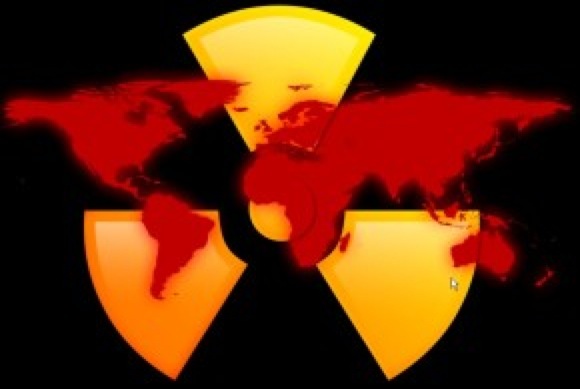In that article ("Mutant Butterflies and Other Scary Stories"), I featured comments about the effects of Fukushima's nuclear disaster by Helen Caldicott, an Australian pediatrician who has spent most of her career sounding the alarm about nuclear dangers. You can find the original article here:
"Mutant Butterflies" survived somewhere long enough for reader Mike Conley of Los Angeles to find it, read it and be stirred up enough by it to send this email:
"In this article you quote Helen Caldicott: "The ambient levels of radiation in Seattle went up 40,000 times above normal." Think about it: If what she says is true, everyone in Seattle would have come down with radiation sickness. Why don't you do an article that digs into whether or not Caldicott can substantiate her scare stories?"I did as reader Conley asked and Ms Caldicott provided the source: Battelle's Pacific Northwest National Laboratory in Richland, Washington. That lab's sensitive monitoring equipment did indeed detect levels of the radioisotope Xenon-133 at about 45,000 times normal in the days following the Fukushima explosions.
In fact, equipment in Austin, Texas measured 100,000 times normal. These were levels well beyond what was released in prior melt-downs either at Pennsylvania's Three Mile Island or Chernobyl.
Xenon 133 is relatively benign because unlike much other radiation it dissipates within a few days. The fact that radiation in such massive amounts from an event so far away circled the globe so quickly, however, should not be considered a benign occurrence.
A radioactive Pacific Ocean plumb is now washing up on the west coast of the U.S. Off the coast of Japan, near Fukushima,the once-important commercial fishery industry is still closed because of high radioactive measurements.
According to Ken Buesseler, a senior scientist at Woods Hole Oceanographic Institution in Massachuetts, the original release of contaminated water was the biggest pulse ever dropped into any ocean. And that water is still being contaminated.
To keep the damaged reactors stable, TEPCO, Fukushima's operator, is running vast amounts of salt water through them. That water not only is finding its way back to the ocean, it's dangerously corroding the tanks and radioactive rods.
Fukushima is still a scary tale in progress. We don't yet know how it will end but even more calamity is possible. Each day, crews, bombarded by radiation, risk their lives to remove radioactive rods from reactor number 4, the most damaged of the units.
Under normal circumstances this job is computerized and removal is handled by cranes. But the cranes were damaged in the earthquake and the computers are inoperative. The rods' protective zirconium cladding burned off during the explosions that followed the earthquake.
This work is so precise that if one exposed rod were to touch another it could set off an unstoppable chain reaction. "Apocalypse" would not be an exaggeration of what could follow.
A total of 1,300 rods need to be removed, precisely, from a fuel pool that's already compromised. The pools sit on top of unstable buildings. There's evidence that the buildings are sinking. The work needs to be completed before the structures collapse or another moderate earthquake brings them down.
Meanwhile, what's already happened is bad enough. Barely three years out from the original melt-down, the number of cases of thyroid cancer diagnosed in those aged 18 and below continues to climb. Normally it's just one or two in a million. At Fukushima, last September, it was 59. In February, just a few months later, it was 79. Post-Chernobyl, the spike in thyroid cases came 3 and 4 years after radiation release.
In other Fukushima-related news, scores of U.S. service members who provided humanitarian relief in the weeks following the Fukushima disaster are suing TEPCO for misleading the U.S. Navy about levels of radioactive contamination. Many of those suing have experienced conditions such as leukemia, blindness, infertility and birth defects.
Closer to home, in February, near Carlsbad, New Mexico, a radiation release at New Mexico's uranium repository exposed at least 13 workers. The site stores nuclear waste from federal nuclear labs and weapons sites. Two weeks earlier, a truck delivering radioactive waste there caught fire inside the facility.
Highway truck traffic carrying spent but dangerous radioactive waste is getting to be fairly common. The New Mexico site gets 2 or 3 deliveries a day from New Mexico, Idaho, Illinois, and as far away as South Carolina.
Back to those mutant butterflies. Right after the Fukushima radioactive release researchers monitored an astounding abnormal mutation rate of 28%. The latest generation is racking up mutations at a 52% rate.
Oh, and one last thing. President Obama has just announced a multi-billion dollar taxpayer-supported grant to a company building two nuclear reactors in Georgia, the first to be launched in the U.S. since the 1970s.




The Nuclear Emergency Tracking Center is a network of enthusiasts who keep a running tally of the radiation count across the US, Japan and parts of Europe.
[Link]